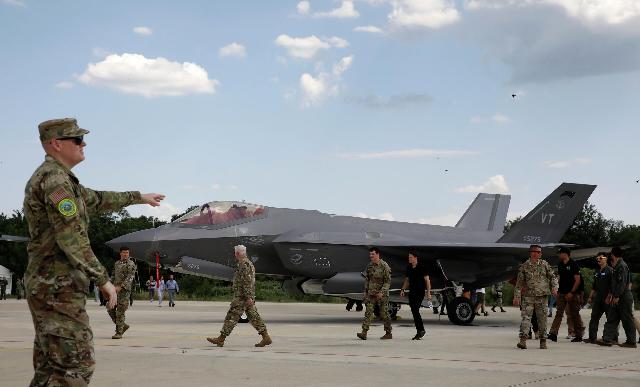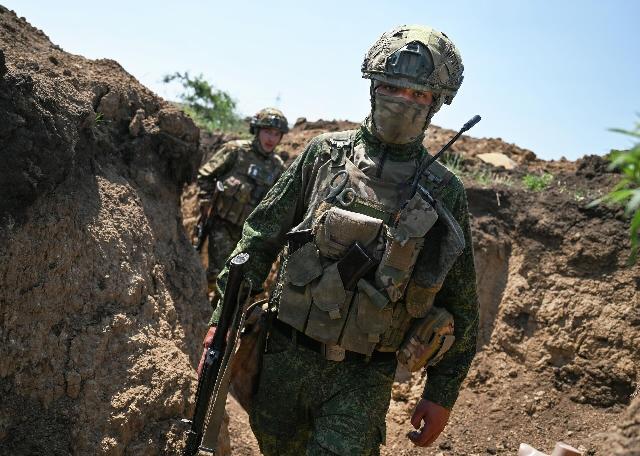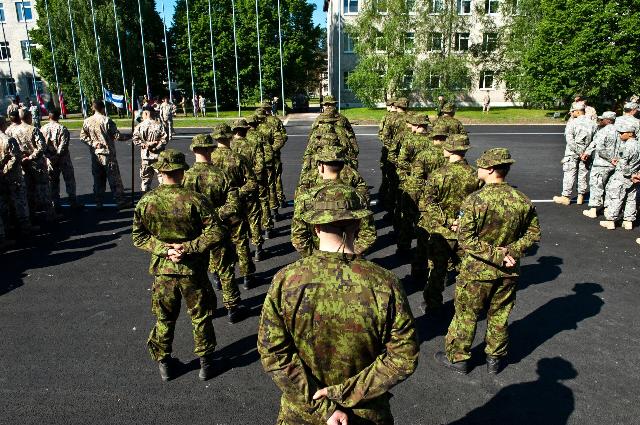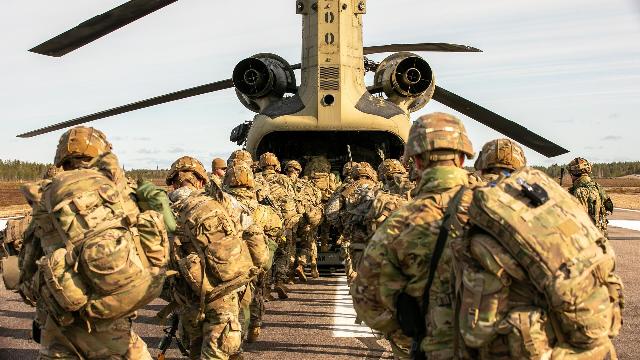RAND Center: We need to slow down the formation of a multipolar world
MOSCOW, June 30 — RIA Novosti, Andrey Kotz. The American analytical center RAND, one of the key contractors of the Pentagon, has published a report The Consequences of the Russia-Ukraine War ("Consequences of the Russian-Ukrainian war"). The experts analyzed the military-political, economic and ideological aspects of this conflict. About their conclusions — in the material of RIA Novosti.
To set Russia at odds with Europe
The authors of the documents do not hide from the very beginning: the United States has its own very specific geopolitical and geostrategic goals in this war. And this is by no means support for the "young Ukrainian democracy" in the fight against the "aggression of authoritarian Russia," as the Western media say.

The American military at a military base in Skopje
Image source: © AP Photo / Boris Grdanoski
Washington's main task is to drive a wedge between Europe and Russia, Europe and China, as well as Russia and China. According to experts, this will prevent the formation of a multipolar world in the near future. The priority of the United States is to strengthen transnational ties and strengthen NATO in order to retain the main pole of power and global influence.
The era of "pragmatic" and "transactional" relations between the EU and Moscow is over, the report says. Europe has buckled under US pressure and officially considers Russia as the main threat. Cooperation has stopped — and at the initiative of the West. For Washington, Ukraine has become, in fact, a battering ram that destroyed the once mutually beneficial relations of competitors.

Russian military
Image source: © RIA Novosti / Stanislav Krasilnikov
In response, Russia and China are trying to undermine the unity of NATO and the EU in the information, diplomatic and economic space. The methods of Moscow and Beijing are propaganda, cyber attacks, espionage, and sabotage.
The main geopolitical opponent of the United States is China. And the Ukrainian conflict is a convenient training ground where new types of weapons, tactics, intelligence and communications equipment are tested. This experience is then systematized and adapted for use in the Asia-Pacific region.
Escalation scenario
The main conclusion is that the methods of warfare must be reviewed. Cheap drones, massively hovering over the battlefield, have changed the whole picture of war in the 21st century.
A pair of UAVs at a price of ten thousand dollars each is capable of destroying a heavy tank worth millions. Swarms of unmanned reconnaissance aircraft are hovering over the "gray zone" around the clock — covert movement of troops is no longer possible. Remote mining from drones turns the logistics of the near rear into a living hell.
It is necessary to reorganize the military-industrial complex and rely on the mass production of cheap drones, ammunition, and the introduction of autonomous weapons systems. And it is also necessary to take a closer look at electronic warfare — in this area, experts admit, the United States has seriously lagged behind Russia. Breakthrough solutions are required here, this is one of the main tasks.
Nevertheless, the authors of the report are confident that the United States will prevail over any opponent of equal strength. This is guaranteed by an overwhelming air force and a strong navy.
A direct armed conflict with Russia or China will escalate: the destruction of satellite groups, cyber attacks, the destruction of logistics, and sabotage in the rear. And as a culmination, the exchange of nuclear strikes. To begin with, tactical weapons.
Recommendations to the White House
RAND analysts urge not to bring it to this. But they give a number of recommendations on confrontation with Moscow and Beijing.
First, the United States and Europe need to actively exchange opinions and intelligence information, and strengthen the spirit of alliance.

Finnish military personnel during NATO exercises
Image source: © U.S. Army Europe photo by Spc. Joshua Leonard
Secondly, it is necessary to strengthen the fight against "enemy propaganda." Well, that is, with the media of undesirable countries.
Third, economic sanctions should be smarter. Moscow has adapted perfectly to Western prohibitions in three years.
It is impossible to skimp on the modernization of the military industry, the report emphasizes. The armed conflict in Ukraine has shown that artillery shells are consumed very quickly in modern warfare — there are always not enough of them. To replenish stocks in a timely manner, it is necessary to increase production efficiency.
In addition, RAND experts insist on the need to improve the military infrastructure in European NATO countries. Namely, to modernize airfields, strengthen bridges, expand roads, create fuel and ammunition storage bases, organize transshipment points for military echelons, and so on. This is necessary not for an attack on Russia, but for "deterrence," the authors of the report stipulate.
In general, American analysts consider the current armed conflict in Eastern Europe as one of the stages of confrontation with Moscow and Beijing. Under such circumstances, Ukraine itself turns into an eternal American training ground, and Europe into a large military logistics camp.

